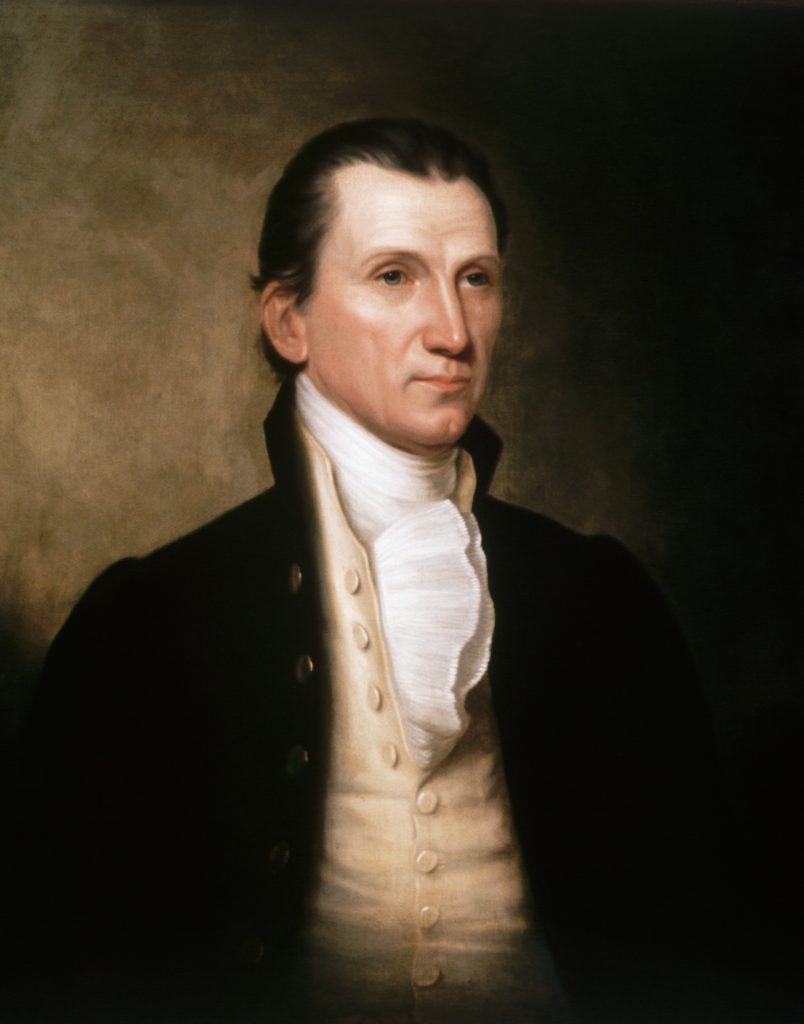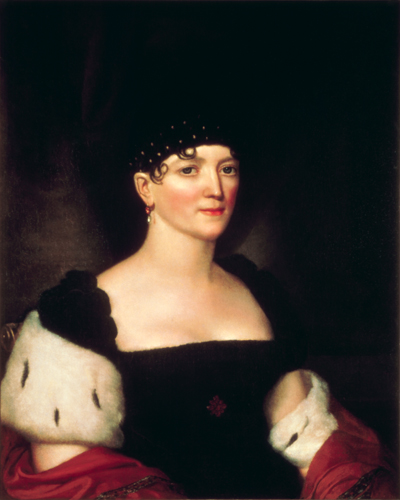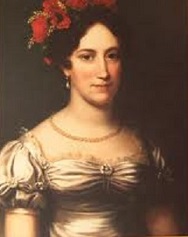James Monroe was the fifth President of the United States, and the final Founding Father to serve in that position. His term lasted eight years, from March of 1817-1825. Monroe fought in the Revolutionary War and studied law under Thomas Jefferson post war. President were not the only positions he held, Monroe was also the 7th United States Secretary of State, the 8th Secretary of War, the 12th and 16th Governor of Virginia, United States Minister to France and the United Kingdom, United States Senator, and Continental Congress and Congress of the Confederation delegates.
On April 28, 1758, James Monroe was born in Westmoreland County, Virginia to Spence Monroe, a planter and carpenter, and Elizabeth Jones. James was their first of four sons, but their second child, as he had one elder sister. The James Monroe Family Home Site, which was his birthplace, is now in the U.S. National Register of Historic Places. His mother Elizabeth tutored him at home until he was eleven. From there, Monroe attended Campbell town Academy until he was sixteen. He was notably very intelligent and smart, and very gifted when it came to Latin and math. In fact, he was able to learn and progress more than majority of boys his same age. John Marshall, who was the 4th Chief Justice of the United States and Secretary of State, was among one of his classmates.
Being the eldest son, James Monroe inherited Spence Monroe’s small plantation and few slaves when he passed away in 1774. Though he was only sixteen years old at the time, Monroe became a member of the ruling class of the planter elite upon inheriting the plantation. Because of this, he also started forming a close relationship with Judge Joseph Jones, his maternal uncle. Monroe then went on to enroll in and attend the College of William and Mary.
After the Revolutionary War broke out in 1775, Monroe dropped out of college in early 1776 to join the 3rd Virginia Regiment. His education and being a well known planter’s son gave him an officer’s commission early on. Along with other students he attended college with and older officers and men, Monroe raided the arsenal in the Williamsburg Governor’s Palace. The 200 muskets and 300 swords they retrieved were later used to so the Williamsburg militia was armed. He was with Washington when they were chased off Long Island during fall of 1776 and the crossing of the Delaware River before the Battle of Trenton that Christmas. With his regiment, Lieutenant Monroe crossed and marched over a snow storm in Nor’easter and then continued North towards Trenton. He was then struck in the left shoulder by a musket ball, injuring him badly. He continued to bleed, and was saved by John Riker, a doctor who he had met just before. The Battle of Trenton was the only battle he participated in, and it took him three months until he had finally recovered from his injury. Monroe was not only the final founding father to serve as president, but also the last Revolutionary War veteran who took part in Combat, while Andrew Jackson was a courier for the militia.
Following the recovery of his injury, Monroe was promoted as a lieutenant colonel in the Virginia militia. His first task was to recruit a new regiment to lead. However, he was never able to do this and soon returned to Williamsburg in September 1779. For some time, he studied law under George Wythe, but then left for Richmond so he could study under Thomas Jefferson. When Richmond was invaded in 1780 by the British, Governor Thomas Jefferson appointed Monroe as a colonel and in command of the militia that had raised to defend Richmond. Afterwards, Monroe continued studying law under Jefferson until 1783. Though not particularly interested in law at first, Monroe took up the practice because he thought it would offer him the most and help him succeed on gaining more wealth and getting a higher social standing along with being more influential politics wise. He passed the bar and then moved to Fredericksburg, Virginia where he practiced law.
Monroe had sold his Virginia estate in 1783 so he could work on his profession as lawyer and politician. Eventually, he would go on to buy a much larger plantation and own many slaves. Rarely he was at his estate to oversee the work, and he did not make much money from it either. A lavish spender and usually high in debt, Monroe would often sell his slaves and some of his property.
In 1782, Monroe was elected to the Virginia House of Delegates. The following November, he was this time elected to Congress. For some time, he lived in Annapolis, then Trenton when Congress moved in June of 1784. After three years, he retired from Congress, which had been in New York City at that point.
While serving for the Continental Congress in the temporary United States capital of New York City, Monroe met Elizabeth Kortright in 1785. Twenty-seven year old James Monroe married the seventeen year old Elizabeth Kortright on February 16, 1786 while still in New York. The newlyweds honeymooned on Long Island and then returned to the city to stay with her father, Laurence Kortright, for some time. The two had three children: Eliza Kortright Monroe Hay (1786-1840), James Spence Monroe (1799-1801, gravestone says J.S. Monroe, so historians have figured that was his name), and Maria Hester Monroe (1804-1850). Elizabeth’s health was often very fragile. When Monroe was elected president, she was unable to uphold the role as a hostess unlike her predecessor Dolley Madison. Eliza Monroe Hay, their daughter, would often assume her mother’s role instead.
Along with Edmund Pendleton, Monroe criticized the constitution because it did not provide basic human rights and was an avid supporter for the passing of the bill of rights. The two of them led a group “federalists who are for amendments”. They were also worried about taxes. In June of 1788, the Constitution was passed, and Monroe, Pendleton, and others vowed to add amendments once it had been. Once it was passed, Monroe ran for a seat in the House in the First Congress, but was defeated by James Madison. In 1790, he was elected as a United States Senator from Virginia, and from there joined the Democratic-Republican party. He was the leader of the party in Senate by 1791.
When he was appointed Minister to France in 1794, Monroe immediately resigned from the Senate. Right away, he was able to get other Founding Father Thomas Paine released from prison in France by arguing that Paine was an American citizen and not British. He arranged to get all Americans out of French prison though, and not just Paine. Monroe issued American passports to Adrienne de La Fayette and her family for her husband’s contribution in the American Revolutionary War. Previously, Elizabeth Monroe had made visits to Adrienne in prison to encourage her release. Adrienne was then able to sail with her new American passport to her husband, all thanks to Monroe. He also tried to convince French citizens that America did not favor Britain over France after George Washington’s policy that they were strictly neutral and were not one side. Washington then discharged Monroe from his position as Minister to France when the French were angered after the signing of the Jay Treaty.
Upon returning to Virginia, Monroe continued to practice law. In 1799 he was elected governor as a Democratic-Republican and served on his first term until 1802. Monroe was able to suppress Gabriel’s Rebellion by calling on the state militia. In 1800 when Thomas Jefferson and Aaron Burr were the main two presidential candidates, he thought of even calling on the Virginia militia to make sure Jefferson was elected.
Once again, Monroe traveled to France in 1803. This time, President Jefferson had sent him to assist Robert R. Livingston as he negotiated with France for the Louisiana Purchase. Afterwards, he served as Minister to the Court of St. James in London for our years from 1803-07. There, he negotiated the Monroe-Pinkney Treaty in 1806 as a renewal of the Jay Treaty, however, Jefferson rejected it, so the treaty never went into effect. As a result of Jefferson not renewing a treaty with Great Britain after the Jay Treaty, Britain and America became enemies once more, and fought against each other in the War of 1812. Monroe then returned home in 1807 when the treaty failed to pass. He suffered through a falling out with one close friend and Secretary of State James Madison because he was angry the treaty was not passed.
The “Quids” a political group that were considered to be Old Republicans, planned to have Monroe run in 1808 after being rejected by Jefferson. Monroe was never a presidential candidate during the election though, and James Madison was elected. From there, he fixed his relationship with Jefferson and the two became friends yet again. It would not be until 1810 that Monroe would speak to Madison though.
For four months, Monroe served as the 16th Governor of Virginia in 1811. That April, in hopes of being able to earn the support of Democratic-Republicans that were more “radical”, James Madison appointed him as Secretary of State. During the War of 1812, Madison and the Congress War Hawks were mainly dominant, and Monroe hardly had anything to do with it. After the British burned down Washington D.C. and the White House on August 24, 1814, John Armstrong was removed from his spot as Secretary of War. Madison hoped that Monroe would do a better job than Armstrong, and appointed him as Secretary of War on September 27. On October 1, he resigned from his post as Secretary of State. However, Madison never appointed someone else, so Monroe held both positions between October 1, 1814 until February 28, 1815 after the war ended. On March 15, 1815, he officially resigned from Secretary of War, and then reappointed once again as Secretary of State. He would continue to serve at this post until he became president in 1817.
In 1816, Monroe ran for president as the Democratic-Republican nominee against Rufus King. He ended up getting 183 of the 217 electoral votes versus King who only had 34! Daniel D. Tompkins served as Monroe’s running mate and vice president. Monroe is the only president besides George Washington to run for reelection unopposed. On March 4, 1817, James Monroe, fifty-eight years old, became the fifth United States President. The Era of Good Feelings began before and lasted through his presidency. It was a sense of confidence for the united States after their victories during the War of 1812.
At first, Monroe and his family did not live in the White House because it was not ready after the Burning of Washington in 1814. Instead, the Monroes lived in a private home located on I Street in Washington D.C. until they were able to move into the White House is 1818. Monroe also made two long national tours after being elected in 1817 to build trust among citizens of the U.S., especially as the country was only growing. Two years later, he negotiated with Spain and made the purchase of Florida for $5 million dollars, finally stopping the deteriorating relationship the U.S. had with Spain. This in part then led to the Panic of 1819, a four-year economic crisis.
During his presidency, there were five cabinet positions to be held along with President and Vice President. John Quincy Adams served as Secretary of State for all of Monroe’s presidency. So did Secretary of Treasury William H. Crawford and Secretary of War John C. Calhoun. Richard Rush was Attorney general for only 1817, and William Wirt took over afterwards. Benjamin Crowninshield held the position as Secretary of the Navy until 1818, Smith Thompson from 1819-23, and Samuel L. Southard from 1823-25. Monroe was known to make balanced Cabinet choices, especially with Adams and Calhoun. Five states were also added to the country during this time: Mississippi (1817), Illinois (1818), Alabama (1819), maine (1820), and Missouri (1821).
On March 4, 1825, Monroe’s presidency was officially over. He moved to Monroe Hill, Charlottesville, Virginia, which is now apart of the University of Virginia. Until shortly before his death, under Thomas Jefferson and James Madison, he served on the Board of visitors for the University of Virginia. Because of his high debts, he sold his Highland Plantation, which is now in the U.S. National Register of Historic Places and owned by the College of William and Mary as Ash Lawn-Highland. Monroe also lived in Oak Hill, Virginia until his wife Elizabeth passed away on September 23, 1830 after suffering through constant illness throughout her life. Previously, they had also hosted the Marquis de lafayette and President John Quincy Adams at their Oak Hill home.
Following his wife’s death, Monroe moved to New York City. There he lived with his daughter Maria Hester Monroe Gouverneur and her husband Samuel L. Gouverneur. Maria had been the first child of a president to ever get married at the White House back when her father was still president. For some time, Monroe’s health had already been declining. In 1831, John Quincy Adams paid him yet another visit, this time in New York City.
On July 4, 1831, James Monroe died at his daughter’s New York City home of heart failure and tuberculosis. He was the third U.S. president to actually die on Independence Day after Thomas Jefferson and John Adams in 1826. Originally, Monroe had been buried in the vault of the Gouverneur Family at New York City Marble Cemetery. However, he body was reinterred to the President’s Circle in 1858 at the Hollywood Cemetery located in Richmond, Virginia. Today, the James Monroe Tomb is a United States National Historic Landmark.





